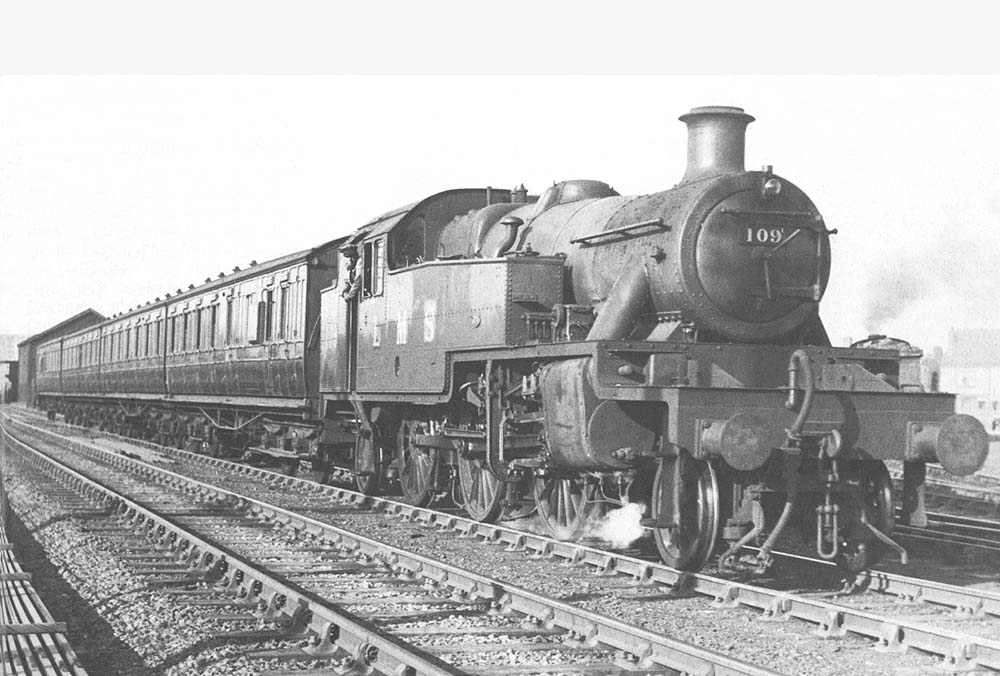|
|
 |
 |
|
London North Western
Railway:

Midland
Railway:

Stratford
Midland Junction Railway
|

|
LMS Route: Nuneaton to Coventry
Foleshill Station: lnwrf135
 |
LMS 3P 2-6-2T No 109 passes Foleshill goods yard whilst at
the head of a four coach Nuneaton to Coventry local passenger service as an
unidentified ex-LNWR 0-6-0 shunts in the yard circa 1948. At the rear of the
train Foleshill station's good shed can be seen. Built at Derby works in July
1935, and despite the poor reputation of this class of locomotives for
steaming, No 109 remained in service until July 1962 when it was withdrawn from
Blackpool Central shed to be scrapped by Campbells of Shieldhall in May 1963.
This class of locomotives were designed by William Stanier, later Sir William
Stanier, and were based on the earlier 1930 design by Henry Fowler. The general
dimensions were the same as Fowler's version but with some improvements to the
chassis and a tapered boiler. They were under-boilered and although
subsequently improved they were always considered to be indifferent performers
and considered by some as inferior to their predecessors. The cab was of
Stanier’s usual excellent design with the coal bunker built higher than
the rear cab windows but angled inwards to provide excellent vision when
running bunker first. The first two lots of locomotives, No 71 and No 144, were
built with the Standard LMS No 6 domeless boiler but the remainder of the class
were built with the improved 6A boilers with separate top-feed and steam dome.
Both types of boilers were later modified to carry Adams ‘Vortex’
blastpipe in an attempt to improve steaming. Locomotives fitted with the later
6A boiler could always be identified by the larger diameter chimney. In a final
attempt to improve the locomotives, six were rebuilt with the larger 6B
boilers; these were No 169 in 1940, No 163 in 1941, No 148 and No 203 in 1941,
and No 40142 and No 40167 in 1956. The re-boilering was not considered to be
cost effective.
 back back
|
|
